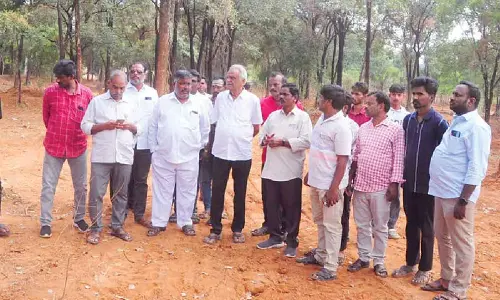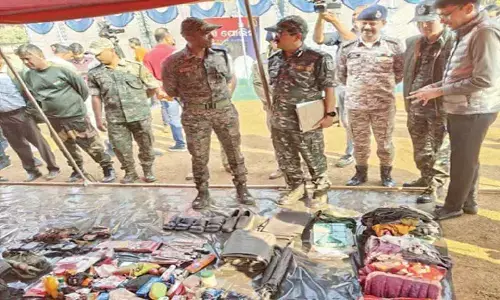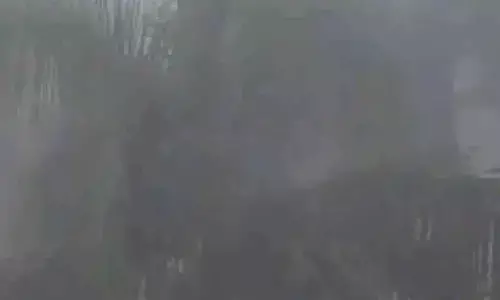7 planets orbiting TRAPPIST-1 may be made of similar stuff

7 planets orbiting TRAPPIST-1 may be made of similar stuff (Photo/IANS)
The seven rocky planets orbiting the red dwarf star TRAPPIST-1 have remarkably similar densities, which provides clues about their composition.
Washington: The seven rocky planets orbiting the red dwarf star TRAPPIST-1 have remarkably similar densities, which provides clues about their composition.
Located about 40 light-years away, TRAPPIST-1 is home to the largest group of roughly Earth-size planets ever found in a single stellar system.
Previous calculations determined that the planets are roughly the size and mass of Earth and thus must also be rocky, or terrestrial -- as opposed to gas-dominated, like Jupiter and Saturn.
The new paper, published in the Planetary Science Journal, offers the most precise density measurements yet for any group of exoplanets -- planets beyond our solar system.
The more precisely scientists know a planet's density, the more limits they can place on its composition.
Consider that a paperweight might be about the same size as a baseball yet is usually much heavier.
Together, width and weight reveal each object's density, and from there it is possible to infer that the baseball is made of something lighter (string and leather) and the paperweight is made of something heavier (usually glass or metal).
The densities of the eight planets in our own solar system vary widely.
The seven TRAPPIST-1 planets possess similar densities -- the values differ by no more than three per cent. This makes the system quite different from our own.
The difference in density between the TRAPPIST-1 planets and Earth and Venus may seem small - about eight per cent - but it is significant on a planetary scale.
For example, one way to explain why the TRAPPIST-1 planets are less dense is that they have a similar composition to Earth, but with a lower percentage of iron - about 21 per cent compared to Earth's 32 per cent, according to the study.
Alternatively, the iron in the TRAPPIST-1 planets might be infused with high levels of oxygen, forming iron oxide, or rust.
The additional oxygen would decrease the planets' densities. The surface of Mars gets its red tint from iron oxide, but like its three terrestrial siblings, it has a core composed of non-oxidized iron.
By contrast, if the lower density of the TRAPPIST-1 planets were caused entirely by oxidized iron, the planets would have to be rusty throughout and could not have solid iron cores.
Eric Agol, an astrophysicist at the University of Washington and lead author of the new study, said the answer might be a combination of the two scenarios -- less iron overall and some oxidized iron.
The team also looked into whether the surface of each planet could be covered with water, which is even lighter than rust and which would change the planet's overall density.
If that were the case, water would have to account for about five per cent of the total mass of the outer four planets. By comparison, water makes up less than one-tenth of one per cent of Earth's total mass.
Because they're positioned too close to their star for water to remain a liquid under most circumstances, the three inner TRAPPIST-1 planets would require hot, dense atmospheres like Venus', such that water could remain bound to the planet as steam.
But Agol says this explanation seems less likely because it would be a coincidence for all seven planets to have just enough water present to have such similar densities.
Some of these seven planets have been known since 2016, when scientists announced that they had found three planets around the TRAPPIST-1 star using the Transiting Planets and Planetesimals Small Telescope (TRAPPIST) in Chile.
Subsequent observations by NASA's now-retired Spitzer Space Telescope, in collaboration with ground-based telescopes, confirmed two of the original planets and discovered five more.




















